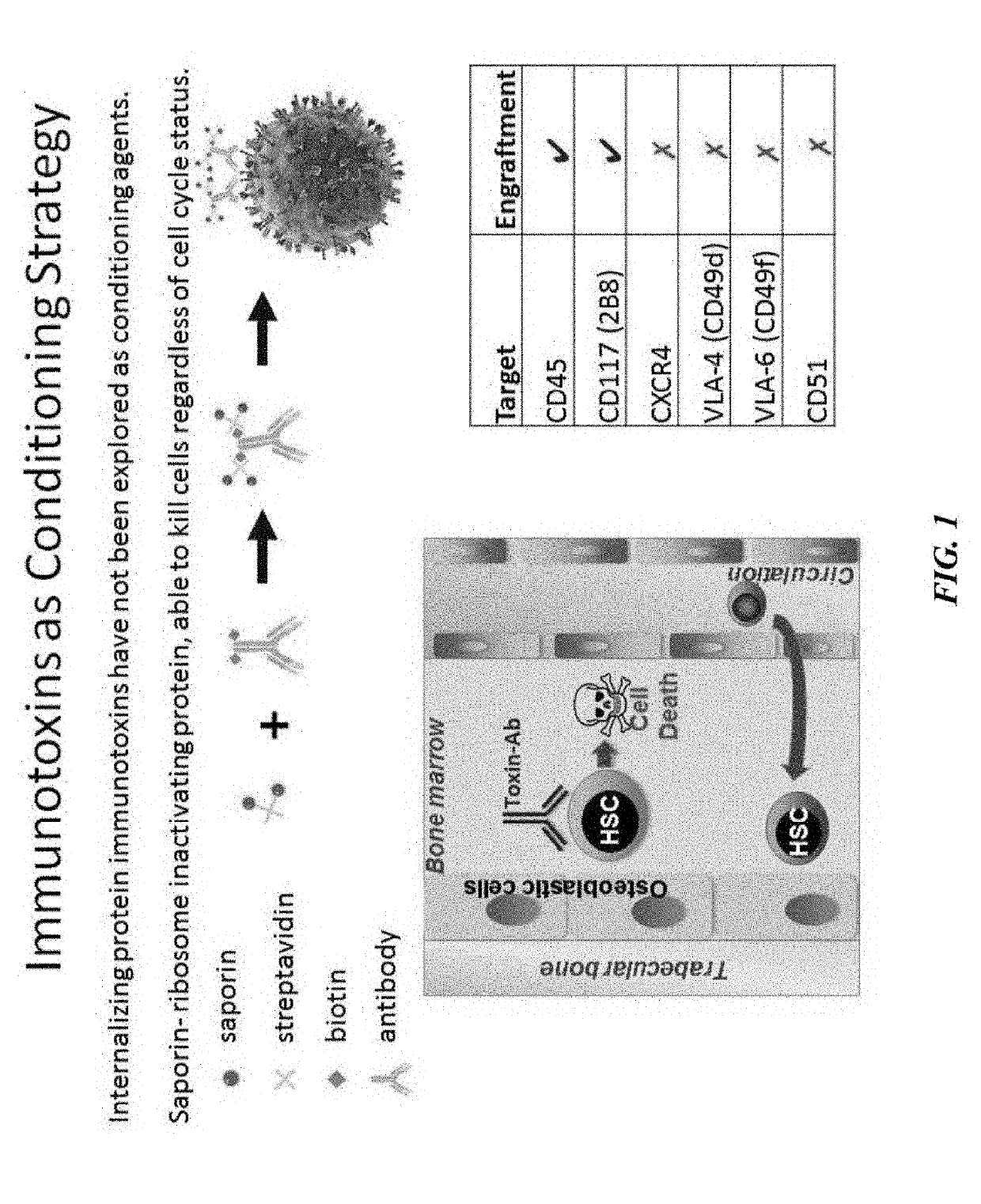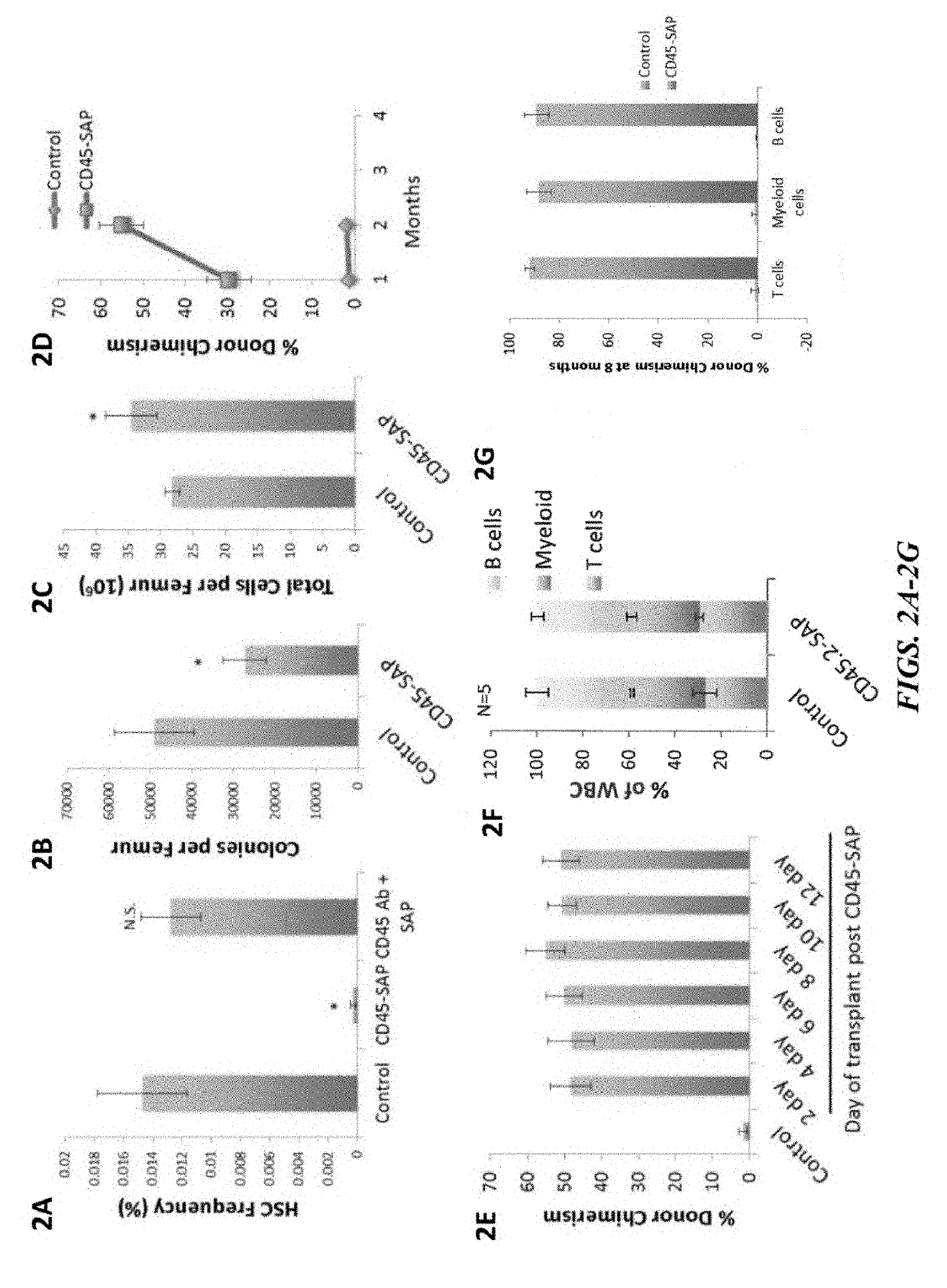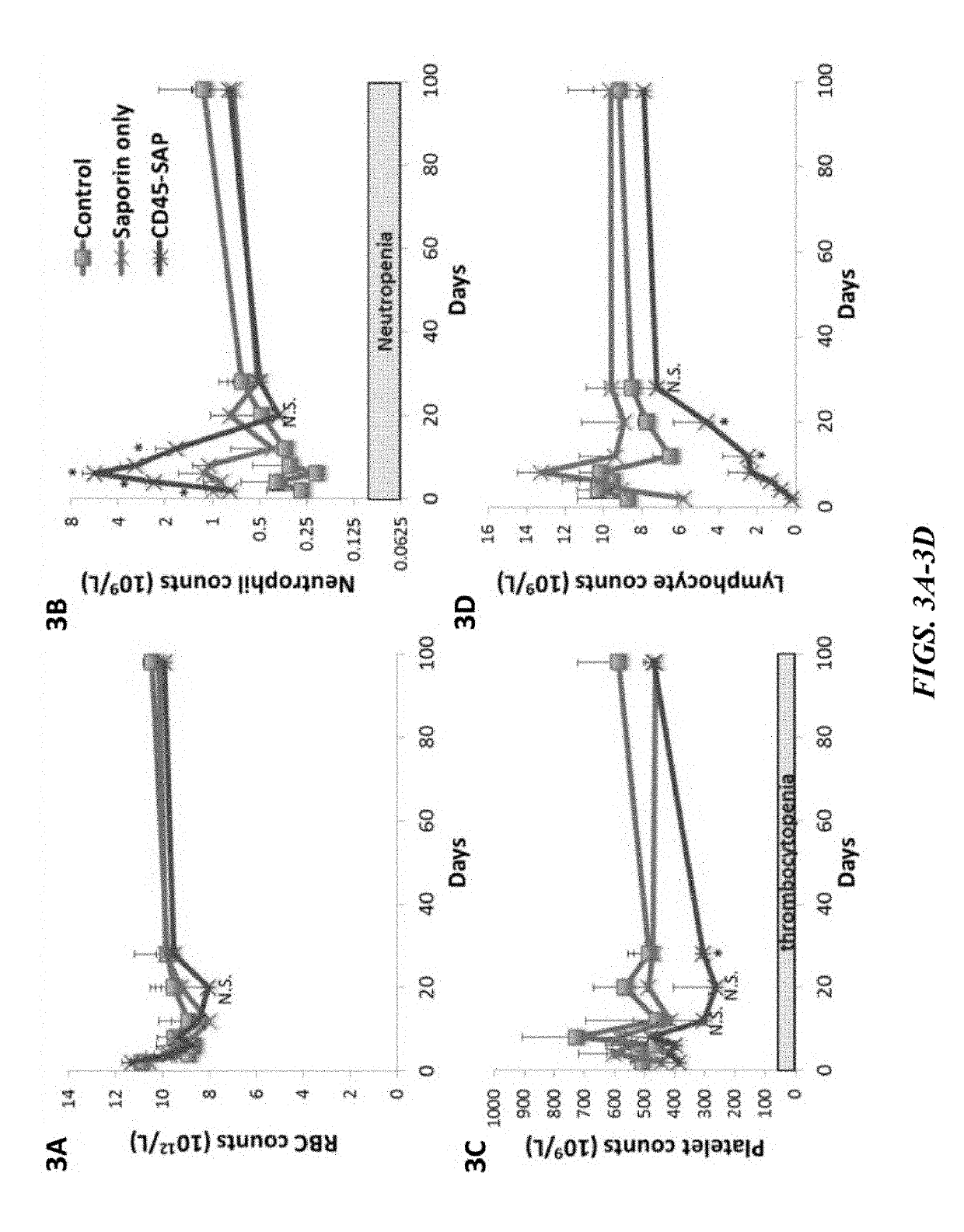Compositions and methods for non-myeloablative conditioning
a non-myeloablative and conditioning technology, applied in the field of compositions and methods for non-myeloablative conditioning, can solve the problems of life-threatening complications, hematopoietic and non-hematopoietic cells and the hematopoietic microenvironment, and current non-targeted conditioning methods, etc., to achieve long-term transplant organ tolerance and induction of solid organ transplant tolerance
- Summary
- Abstract
- Description
- Claims
- Application Information
AI Technical Summary
Benefits of technology
Problems solved by technology
Method used
Image
Examples
example 1
[0192]The present inventors have developed and investigated the use of a biotin-labeled anti-CD45 mouse monoclonal antibody in conjunction with a streptavidin-saporin conjugate to create an immunotoxin to CD45 (CD45-SAP). Saporin is a member of the ricin family of toxins that catalytically inactivates ribosomes halting protein synthesis thereby leading to cell death. However, unlike ricin, saporin lacks an internalization domain and only induces death when coupled to a ligand or antibody that is internalized (Bergamaschi, G., et al., Br J Haematol (1996), 93, 789-794). This allows the present inventors to selectively target which cells to kill, while sparing other tissues, reducing overall toxicities.
[0193]Whole bone marrow cells were treated with CD45-SAP ex vivo and a colony forming assay was performed to assess short-term stem cell and progenitor activity. Potent inhibition of colony forming activity by CD45-SAP was observed in a dose dependent manner (IC50 of 1 nM) while free sa...
example 2
[0197]The present inventors next assessed the toxicity of the CD45-SAP immunotoxin relative to the toxicity of irradiation in non-transplanted mice. Time course experiments were performed in mice to compare the toxicity of CD45-SAP conditioning relative to an equivalent sub-lethal 5Gy dose of total body irradiation. Two days post-conditioning, the mice were euthanized and submitted to a rodent pathologist for femur and thymus mounting, sectioning and staining with hematoxylin and eosin. Complete blood counts and flow cytometry analyses were also performed. Non-conditioned mice represent the control.
[0198]As illustrated in FIGS. 7A and 7B, a much quicker recovery of B- and T-cell populations was observed in the CD45-SAP group, relative to irradiation. As shown in FIGS. 7D and 7F, bone marrow cellularity and colony forming counts (progenitor activity assay) were also less adversely affected with CD45-SAP relative to irradiation.
[0199]Two days post-conditioning, live mice (under anesth...
example 3
[0202]To investigate the utility of the CD45-SAP immunotoxin in correcting an animal model of sickle cell disease, the present inventors created sickle cell mice chimeras by myeloablative conditioning of wild-type recipients, followed by transplantation with bone marrow cells from human sickle hemoglobin knock-in mice (Townes mice). Two months post-transplantation, the sickle cell mice were conditioned with CD45-SAP and transplanted with whole bone marrow cells from wild-type CD45.1 donor mice.
[0203]Three different transplantation conditions were investigated (outlined in FIG. 11A) with n=6 mice per condition. Mice in the condition A group received 1.3× the standard dose of CD45-SAP used previously in wild-type mice at Day 0, followed by transplantation with lx 107 donor whole bone marrow cells at Day 3 (1× cell dose). Mice in the condition B group received injections of 1×CD45-SAP at day 0 and Day 3, followed by transplantation with 1×107 whole bone marrow cells at Day 6 (1×cell do...
PUM
| Property | Measurement | Unit |
|---|---|---|
| time | aaaaa | aaaaa |
| molecular weight | aaaaa | aaaaa |
| volume | aaaaa | aaaaa |
Abstract
Description
Claims
Application Information
 Login to View More
Login to View More - R&D
- Intellectual Property
- Life Sciences
- Materials
- Tech Scout
- Unparalleled Data Quality
- Higher Quality Content
- 60% Fewer Hallucinations
Browse by: Latest US Patents, China's latest patents, Technical Efficacy Thesaurus, Application Domain, Technology Topic, Popular Technical Reports.
© 2025 PatSnap. All rights reserved.Legal|Privacy policy|Modern Slavery Act Transparency Statement|Sitemap|About US| Contact US: help@patsnap.com



